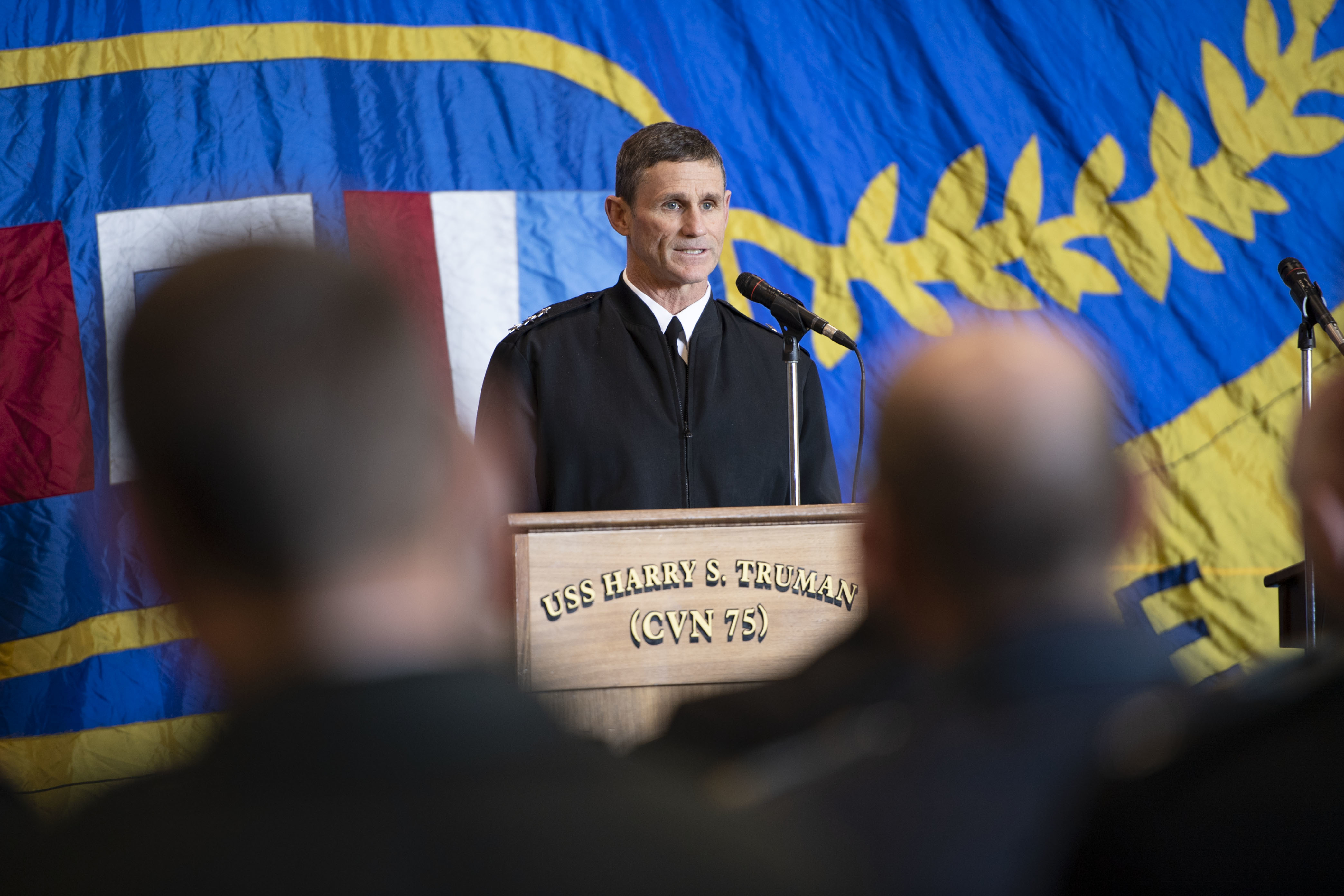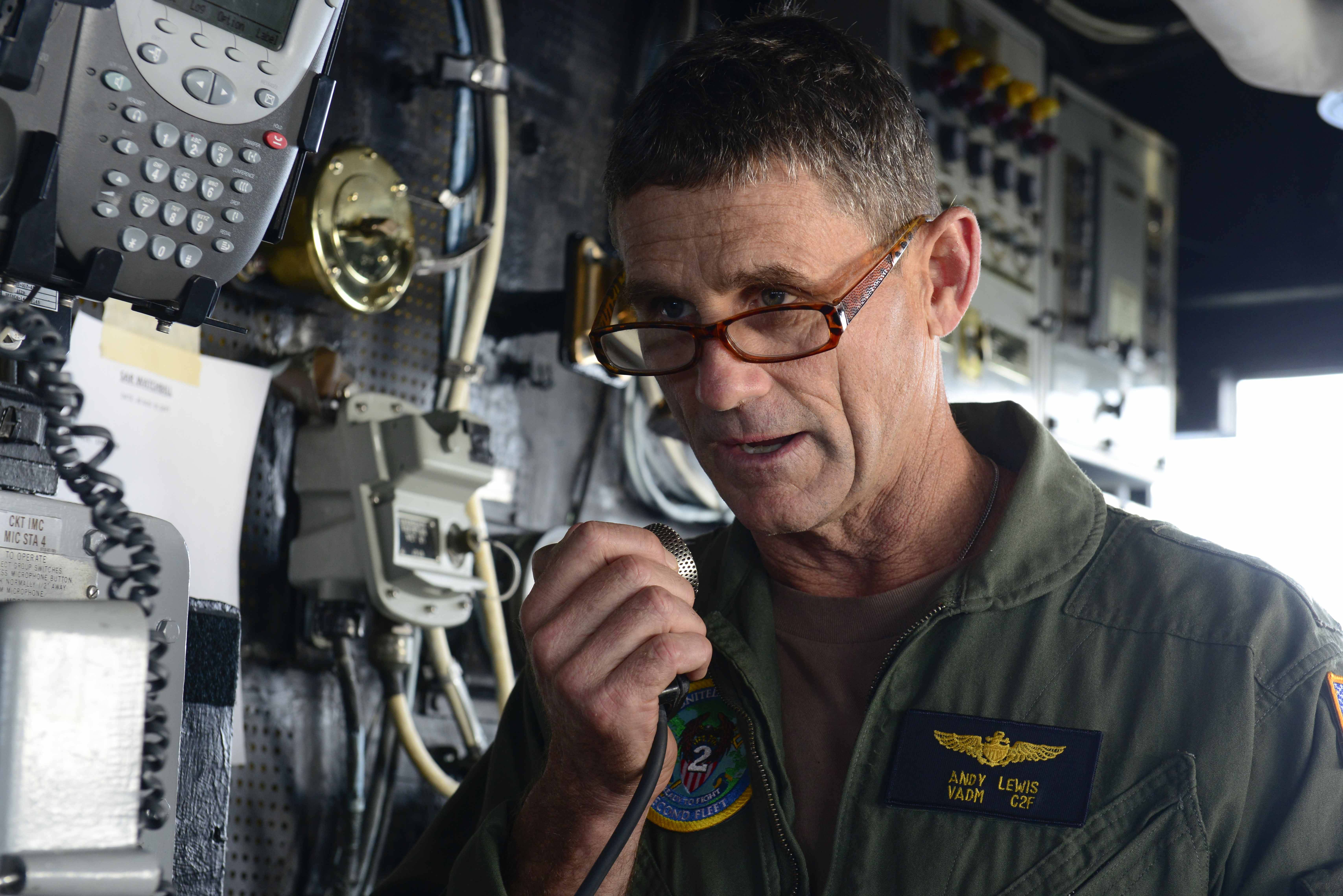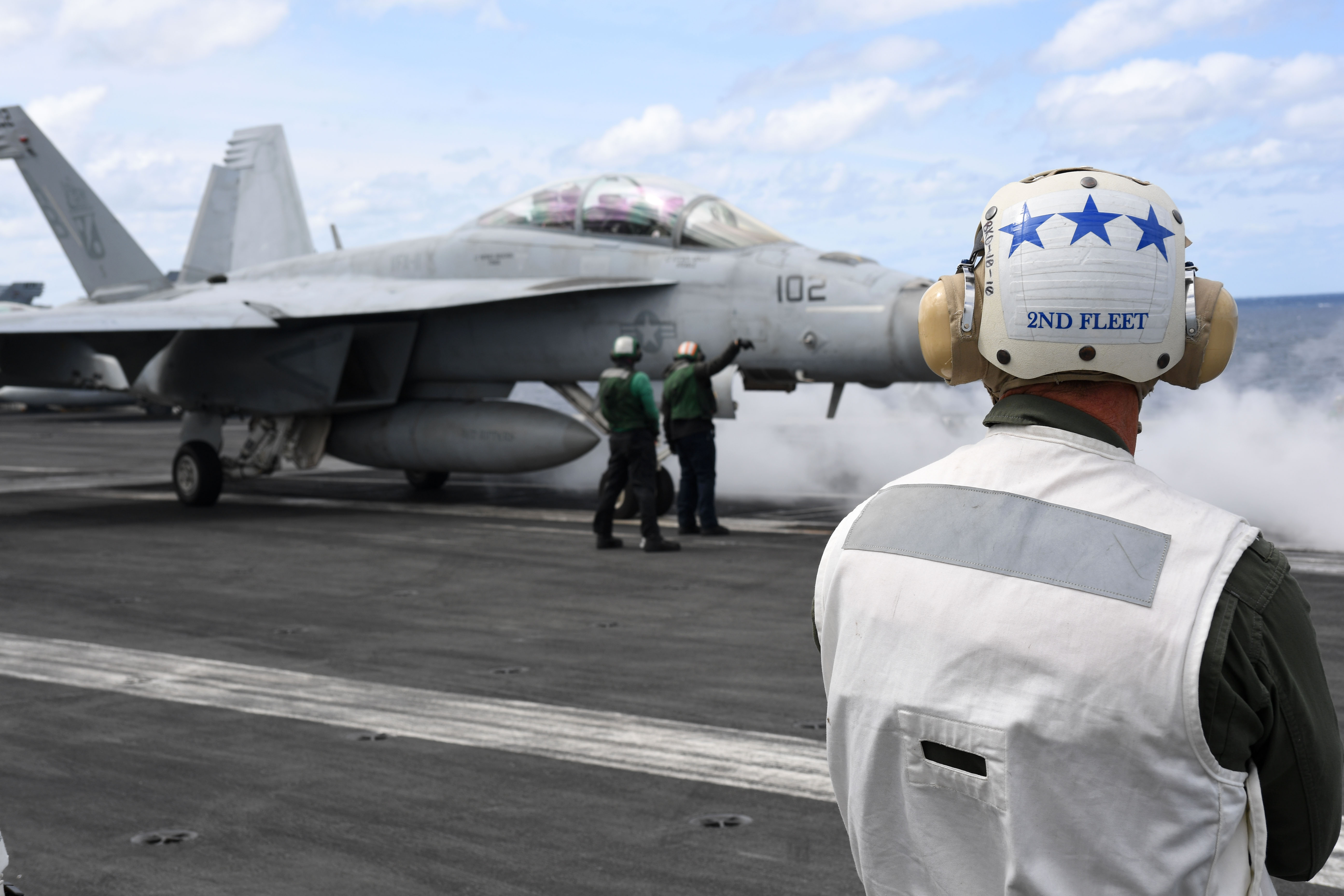The US Navy’s revived 2nd Fleet, with a focus on the North Atlantic and nearby Arctic, is now operational
The re-established command will operate in the North Atlantic and Arctic, and will take part in Exercise Baltic Operations in mid-June.

The U.S. Navy’s 2nd Fleet, revived last year to provide a bigger U.S. presence in the North Atlantic and Arctic, now has enough staff to command ships, aircraft and forces — just in time to lead the 47th annual Exercise Baltic Operations (BALTOPS) in mid-June.
On May 29, Vice Adm. Andrew “Woody” Lewis, commander of the U.S. 2nd Fleet, announced that the reinvigorated fleet had reached initial operational capability and will be fully operational by the end of this year.
Speaking on board the Naval Station Norfolk in Virginia, Lewis said the fleet will focus on the North Atlantic, including parts of the adjacent Arctic Ocean.
“The North Atlantic has some of the world’s busiest shipping lanes, and with the opening of waterways in the Arctic, this traffic will only grow,” Lewis said in a statement. Competitors and allies alike have recognized this fact, he added, so it is “critically important” for the U.S. to have a presence in the north.
The command unites the eastern and western sides of the North Atlantic, previously delineated by the southern point of Greenland. The 2nd Fleet will control forces around the Greenland-Iceland-UK gap as well as in the Barents Sea.
Lewis told reporters that the increasing roles of both Russia and China in the region “played a part” in 2nd Fleet’s re-creation. Lewis is particularly concerned about Russia’s maritime presence in the region.
“Let’s be frank, the Russian undersea threat is real,” Lewis said at the Center for Strategic and International Studies last November.
In the Arctic, he said on Wednesday, “we have to take a measured and deliberate approach to be operating up there.”
He steered away from characterizing the region as competitive now, “but it’s approaching a competitive space,” he said, and the 2nd Fleet’s operations would “maintain it as place of freedom of navigation under international law.”
“We can’t do that virtually,” he said.
The 2nd fleet was originally created in the early 1950s to monitor Russia’s maritime activities during the Cold War. It was disbanded in 2011 and then reestablished in August 2018.
In April 2019, Lewis announced the fleet would lead Exercise Baltic Operations (BALTOPS) in June, with about 8,000 sailors from 18 nations. The exercise in the Baltic region will include NATO and other international partners, including Sweden and Finland.
Rachel Ellehuus, deputy director of the Europe program at the Center for Strategic and International Studies, says that these announcements are significant because they show a growing awareness of the role the North Atlantic and the Arctic play in international relations.
“The North Atlantic, the Arctic Ocean, the North Sea and the Baltic Sea are all part of one area of operations,” she tells ArcticToday. “For example, if we’re tracking a Russian submarine that’s leaving out of Kaliningrad or one of the Baltic ports, we’re going need to make sure that we can track that all the way down the East Coast. So there has to be some continuity of operations.”
As waters warm, the distinctions between the North Atlantic and Arctic oceans are also becoming more blurred. And with increased activity in northern waters — from Russian undersea operations to scientific research, shipping and tourism — the 2nd Fleet’s reinvigoration shows a renewed focus on the region.
The U.S. needs to be able to operate in these areas, Ellehuus says, both in terms of understanding the intense environment and having the freedom to work with allies and partners.
“Deterrence is the best defense,” she says. “So, I think an exercise like BALTOPS, which has been going on for almost half a century, is really important.”
On Wednesday, Lewis said the Baltic exercise would provide a “collective opportunity to promote peace and security through cooperation, collaboration, interoperability, and an unambiguous display of strength in the Baltic region.”
Improving capabilities, especially in the harsh environment of the north, “will give us the ability to deter aggression and project stability,” he said.
And after BALTOPS? The 2nd Fleet controls several assets, including the Harry S. Truman Carrier Strike Group, the Navy Times reported. After the June exercises, Lewis plans to “start doing some exercises” with it.

